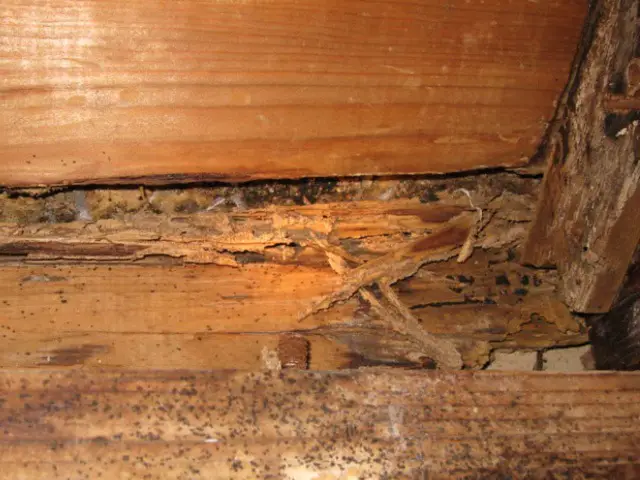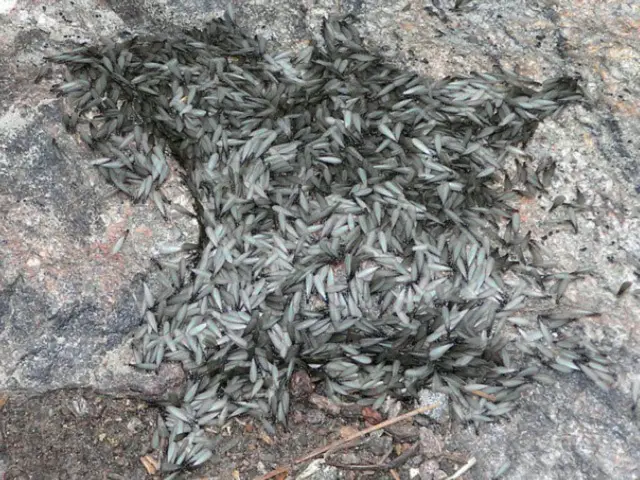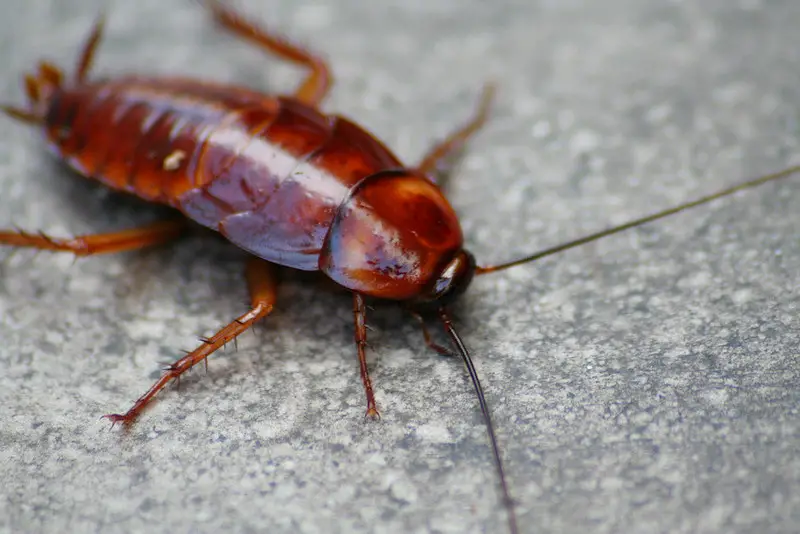When you think of fleas, you are probably not thinking about how long fleas can live on humans. We normally associate fleas with dogs and cats, not their owners. Fleas live on warm-blooded animals, small mammals and birds. Unlike human bodies, the bodies of furry and feathery animals are better suited for fleas. But the question is: “How long can fleas live on humans?”
Fleas can live on humans for 6-months or even longer. Tiny amounts of human blood is enough for fleas to survive for more than 180-days in laboratory settings. But humans aren’t the preferred hosts of fleas.
How long do fleas live on humans?
Fleas can bite humans, but they cannot live on them. Cat and dog fleas are not attracted to humans because they are not good hosts. A good flea host has much more hair or fur than human beings. Fleas cannot live on humans because they cannot lay their eggs on their few hairs. Animals with substantial hair, like rats, raccoons, dogs, and cats, are much better hosts for fleas.
How long can fleas live in humans?
Fleas cannot live long on humans. For fleas to survive, they need a warmer host, such as a cat or a dog. Due to the high body temperature of these pests, they can only live for extended periods if an animal host is available.
The fact that fleas cannot breed on humans also hurts their chances for survival on humans alone. If a flea to survive, it must find an animal host.
Fleas need animals for their daily survival, but they also need them to reproduce. According to a recent study, female cat fleas can stay on humans for less than ten minutes, and male cat fleas can stay under five.
Dogs, cats, guinea pigs and other furry pets are the favorite hosts of fleas. Their survival depends on finding the ideal host. Fleas can live up to one hundred days without a host to feed on, but they cannot breed on humans.
How long will fleas stay on humans?
Fleas won’t stay long on humans. Fleas need warmer hosts than humans. And because fleas cannot breed on humans, they won’t stay on them long.
For example, female cat fleas can stay on humans for less than ten minutes, and male cat fleas can stay under five.
What is a human flea?
A human flea or a house flea is not the kind of flea that might live on your pet. There are common fleas like cat and dog fleas. And there are uncommon fleas like human fleas. While cat fleas prefer to feed on cats and dogs, human fleas prefer to feed on the blood of people, wild board, pigs, and rats. But if human fleas don’t have access to people, they will suck the blood of badgers, rats, pigs, or cats.
There are human fleas around the world, but they are more common in North America than dog fleas. Fleas often jump from pigs to humans. Human fleas can be infected with tapeworm. And human fleas can transmit typhus.
Related posts:
- How Long Fleas Live Without A Host?
- How Long Can Fleas Live Without A Food Source?
- How Long Can Fleas Live Without A Cat?
- How long will fleas live in a house without pets?
Fleas and their hosts
There are more than 2000 flea species in the world today. Each type of fleas have their preferred hosts:
Cat fleas (Ctenocephalides felis) are the most common flea pests on pets and humans in the United States. When we think of fleas invading our pets, we think of cat fleas. These parasites live and suck the blood of pets, livestock, and people. Cat fleas are just as likely to feed on Buddy as they are on Tiger despite their name. Cat fleas can bite humans, but they don’t use humans as hosts.
Dog fleas (Ctenocephalides canis) infest homes less frequently. However, dog fleas aren’t particularly picky parasites and will draw blood from humans, cats, dogs, foxes, woodchucks, and rats.
Human fleas (Pulex irritans) prefer to feed on pigs or humans, but these parasites are rare in homes in industrial nations and are more often associated with wildlife. However, farms can become infested with human fleas, particularly in pigsties. Pulex irritans has been identified as a vector for the bubonic plague in the middle ages, causing millions of deaths.
Rat fleas (Xenopsylla cheopis or oriental rat flea and Nosopsyllus fasciatus) are parasites of small mammals like roof rats and Norway rats. They are obligate blood-feeders. Xenopsylla cheopis is one of the carriers of the plague bacterium Yersinia pestis, responsible for wiping out about a third of the population in medieval Europe. They generally don’t infest human dwellings unless rats are in the area.
Chigoe fleas (Tunga penetrans, jigger or jigger flea and Tunga trimamillata) are only about 1 mm in size and live on people. These parasitic fleas burrow into the skin of human hosts, causing ulcers, swelling, and itching. These parasites can swell to pea-size inside the host’s tissue, impeding the walking of impacted individuals. Chigoe fleas widely inhabit the tropics and subtropics. These parasites are mainly a concern in sub-Saharan Africa and Latin America.
Hen fleas (Echidnophaga gallinacea), also known as sticktight fleas, are among the most common types of poultry parasites. Most often, the hosts of these fleas are poultry, but they will also attach to domestic dogs and cats. Hen fleas attach to the ears or toepads of dogs and cats. When chickens are infested, hen fleas can accumulate around the comb, wattle, and eyes. Although hen fleas normally feed on birds, they will feed on humans if they are in the area of infested poultry.
How big are human fleas?
Human fleas are larger than dog or cat fleas. Human fleas can grow to four millimeters in length while adult cat fleas only grow to about three millimeters. The size of the human larvae is larger than the larvae of dog fleas.
How do you identify flea bites on humans?
Flea bites are easily confused with bed bug bites. For the untrained eye, it can be hard to tell the difference between flea bites or bed bug bites. Because fleas usually bite people in the lower part of the body. Fleas often bite people in the knees and elbows, but bed bug bites are generally on the upper half of the body, on the arms, neck or face.
Things to know about flea bites on humans
Humans generally get flea bites when the parasites jump from pets or farm animals to humans. Flea bites are often grouped in threes. They are small, discolored bumps. Although flea bites can itch and hurt, they rarely cause lasting harm. In most cases, a flea bite is a short, annoying experience. But flea bites on humans can be dangerous because them may spread diseases like typhus, plague, and cat scratch disease according to the Centers for Disease Control and Prevention.
How to prevent flea bites on humans?
The best way to prevent flea bites on humans is to make sure your pets remain parasite free. Most fleas in this country prefer to feed on animals, not human beings. But, people can fall victim to flea bites at times.
How to protect yourself from flea bites?
Use insect repellents to keep fleas away from you. Flea repellents with DEET or oil of lemon eucalyptus are a couple of effective flea repellents for you to try. Before you use an insect repellent be sure to read manufacturer’s instructions.
To minimize exposure to fleas, wear long pants and long sleeve shirts. Wear long socks and boots to protect your lower body from flea bites. Treat your clothing with 0.5 percent permethrin to control fleas.
Don’t touch stray animals. If you have to handle sick or dead animals, make sure to wear gloves.
What does permethrin do to fleas?
Permethrin can eliminate your flea problem. As a bonus, it can prevent ticks too. This flea control solution doesn’t have a stong odor like other repellents.
Here is how to apply permethrin on your clothes to keep fleas away:
- Always wear protective gear when applying. Check with the manufacturer on the recommended protective gear to apply the solution.
- Keep the spray or dispenser moving quickly as you apply the solution.
- Do not over-saturate or soak the clothes with permethrin.
- Keep it out of the eyes or face.
How do you get human fleas?
Even today, with insect repellents, cleaning products, and modern medicine, humans can get fleas. The human flea can live undetected for short periods on the skin of people. Unlike cat and dog fleas that prefer to live on hairy mammals and birds, human fleas are happy to live on humans.
Why do humans have fleas?
Fleas need a host to survive. Humans can be flea hosts if dogs or cats aren’t available. Although cat and dog fleas don’t live on people, they might bite and suck your blood before they move on. Humans rarely have fleas in the industrialized world.
How to get rid of human fleas?
Once you have identified a flea problem, it’s time to get rid of them.
- If there is a flea infestation in your home, wash your clothes to get rid of all fleas.
- Take a shower or bath and wash the fleas off your body. Use flea shampoo for your hair and beard. You can use a flea shampoo designed for dogs. If you don’t have flea shampoo, you could also use dish soap to kill fleas. Apply it to your hair and leave it on for five to ten minutes before combing through with a flea comb. Only after you have combed through your hair should you wash out the soap. Clean the comb after each use.
- Spray yourself with anti-flea spray. If you don’t want to buy a flea spray, you can make your own. Mix one tablespoon of essential oil and nine tablespoons of boiled water.
- Thoroughly clean your clothes, covers, furniture, bed, and carpets.




